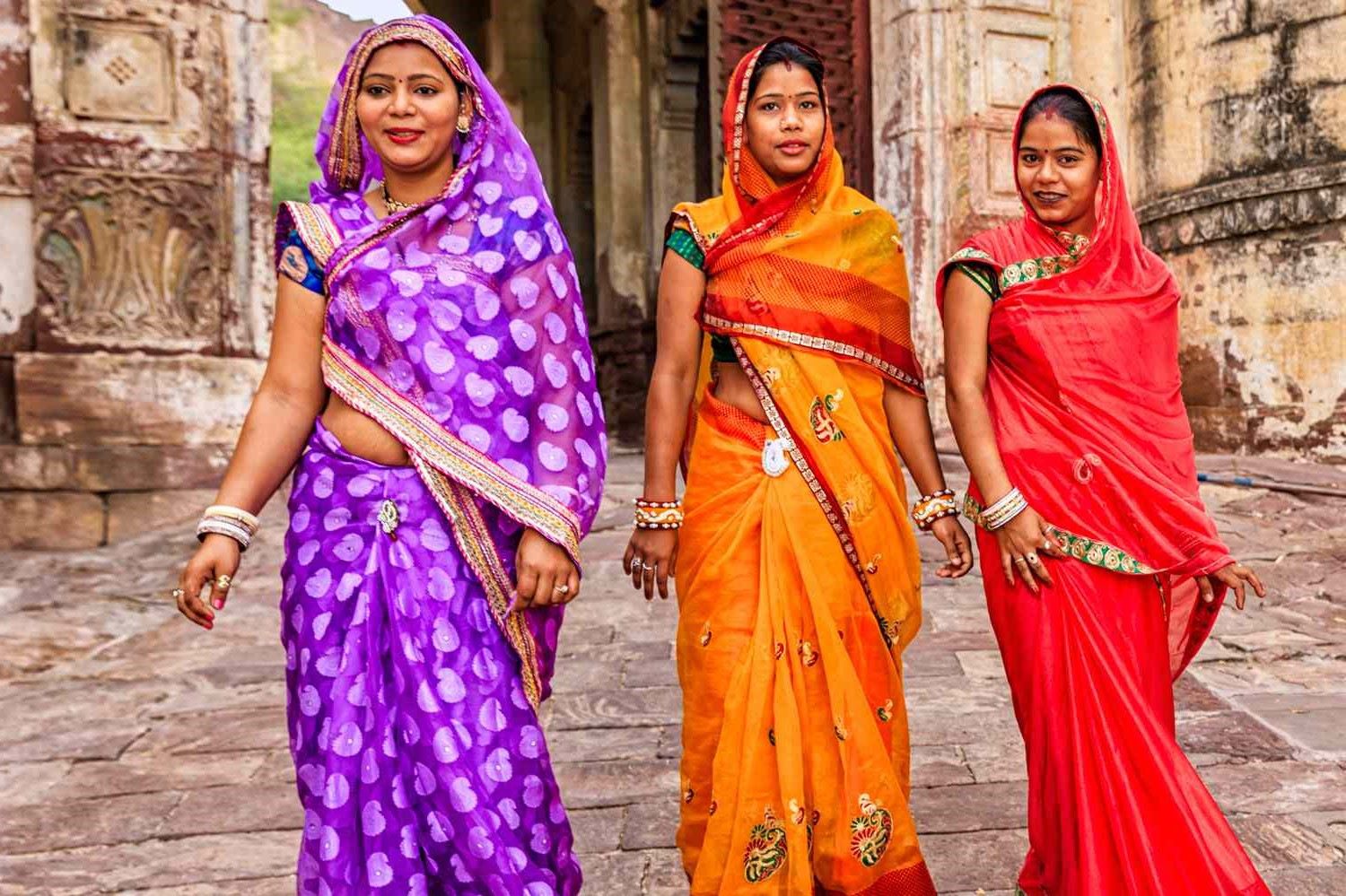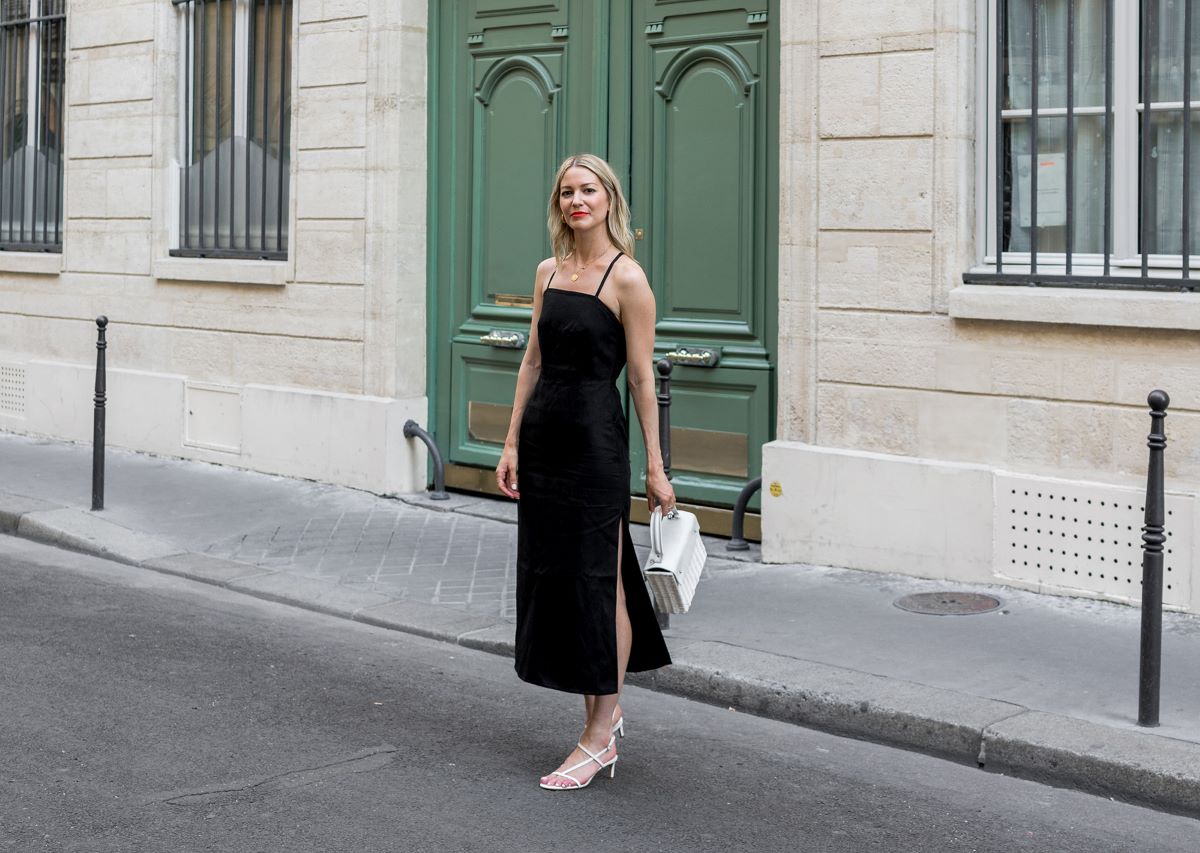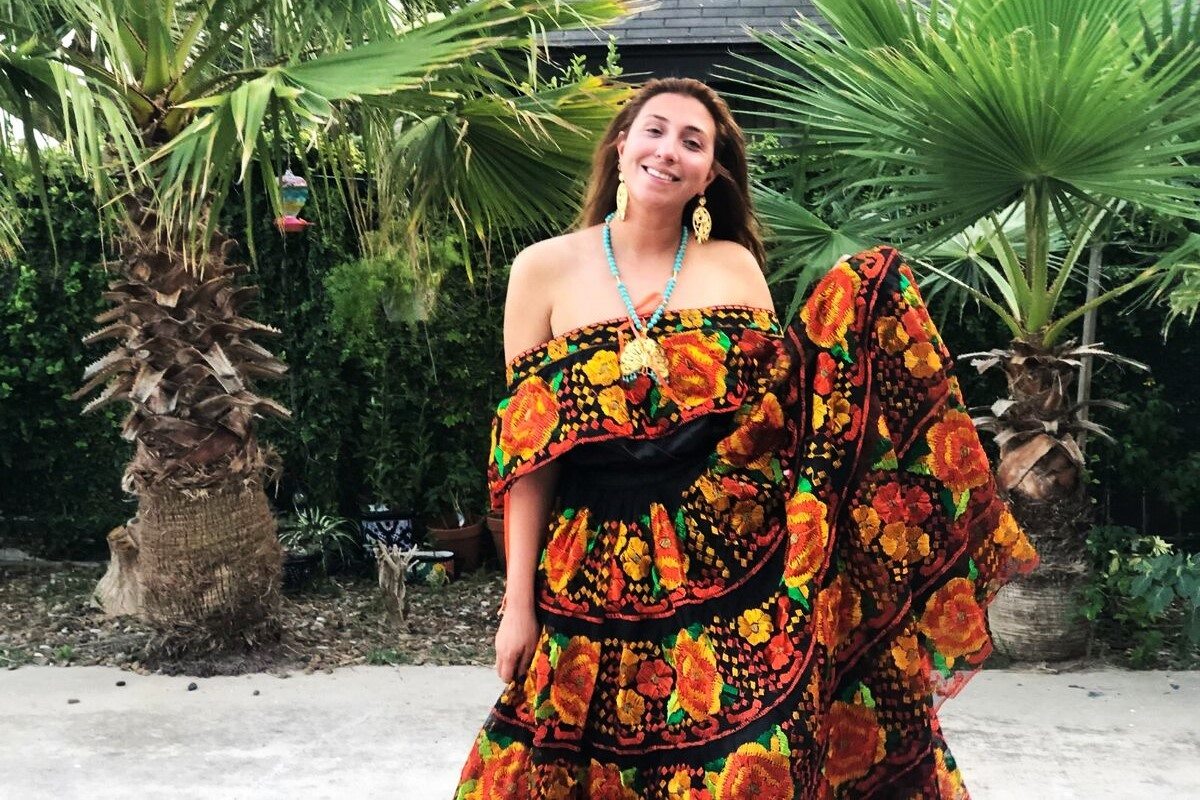

Lifestyle
How To Wear A Sari
Published: March 1, 2024
Learn the art of draping a sari with our step-by-step guide. Discover the latest trends and styles to elevate your sari game. Embrace the timeless elegance of this traditional Indian attire.
(Many of the links in this article redirect to a specific reviewed product. Your purchase of these products through affiliate links helps to generate commission for Noodls.com, at no extra cost. Learn more)
Table of Contents
Introduction
Wearing a sari is an art form that has been cherished for centuries in India and other parts of South Asia. This traditional attire is not just a garment; it's a symbol of grace, elegance, and cultural heritage. The sari, often made of luxurious fabrics such as silk, chiffon, or cotton, is a versatile piece of clothing that can be styled in numerous ways to suit various occasions, from weddings and festivals to formal events and everyday wear.
The process of draping a sari is a beautiful ritual that involves intricate steps, each contributing to the overall aesthetic and comfort of the attire. From selecting the right sari to adding the perfect accessories, every aspect of wearing a sari is an opportunity for self-expression and creativity.
In this comprehensive guide, we will delve into the enchanting world of saris and explore the step-by-step process of adorning this timeless garment. Whether you're a novice seeking to embrace the elegance of a sari for the first time or someone looking to refine their sari-draping skills, this guide will equip you with the knowledge and confidence to carry this exquisite attire with poise and sophistication.
So, let's embark on this enchanting journey and unravel the secrets of adorning a sari with finesse and flair. Whether you're drawn to the vibrant hues of a traditional Kanjeevaram sari or the delicate allure of a chiffon drape, the art of wearing a sari is a celebration of femininity, tradition, and individuality.
Read more: How To Wear Airpods
Step 1: Choosing the Right Sari
The first step in adorning a sari is selecting the perfect one that resonates with your personal style and the occasion. The sheer variety of saris available can be overwhelming, but understanding a few key factors can simplify the decision-making process.
Consider the Occasion
The occasion for which you are wearing the sari plays a pivotal role in determining the type of sari to choose. For formal events such as weddings or religious ceremonies, opulent silk saris with intricate zari work or embellishments are ideal. On the other hand, for casual gatherings or everyday wear, lightweight cotton or chiffon saris in vibrant colors or subtle prints are more suitable.
Fabric and Texture
Saris are crafted from a myriad of fabrics, each offering a unique drape and aesthetic appeal. Luxurious silk saris exude grandeur and are favored for celebratory occasions, while lightweight georgette and chiffon saris are perfect for a breezy, effortless look. Additionally, cotton saris are prized for their comfort and breathability, making them a popular choice for daily wear.
Color and Design
The color and design of the sari are essential elements that contribute to its overall allure. Vibrant hues such as crimson, royal blue, and emerald green are often chosen for festive occasions, symbolizing joy and vitality. Conversely, pastel shades and soft tones are favored for daytime events or a more understated look. The design of the sari, whether adorned with intricate motifs, floral patterns, or geometric prints, reflects the wearer's individual taste and cultural influences.
Read more: How To Wear Chelsea Boots
Body Type and Comfort
When selecting a sari, it's crucial to consider your body type and comfort. The drape of the sari should complement your physique and accentuate your best features. Additionally, the weight and texture of the fabric should align with your comfort preferences, ensuring that you feel at ease while wearing the sari throughout the day or evening.
By carefully considering these factors, you can confidently choose a sari that not only reflects your personal style but also enhances your elegance and charm when draped with finesse.
Step 2: Preparing the Blouse and Petticoat
Before embarking on the graceful art of draping a sari, it is essential to ensure that the blouse and petticoat are prepared to provide a secure foundation for the sari. These foundational garments play a crucial role in enhancing the overall look and comfort of the sari ensemble.
Selecting the Blouse
The blouse, known as the choli or ravika in some regions, is a fitted garment that complements the sari. When choosing a blouse, consider the occasion and the design of the sari. For formal events, intricately embellished blouses with intricate embroidery, sequins, or beadwork can elevate the ensemble, while simple, well-tailored blouses are suitable for casual or everyday wear. The neckline and sleeve length of the blouse can also be customized to suit individual preferences and cultural norms, adding a personalized touch to the attire.
Choosing the Petticoat
The petticoat, a skirt-like undergarment worn beneath the sari, provides the foundation for draping the sari. It is typically made of cotton or silk and is available in various colors to match the sari. When selecting a petticoat, opt for a well-fitted one that sits comfortably at the waist and falls gracefully to the ankles. The petticoat's color should complement the sari, ensuring that it does not peek through the fabric when draped.
Read more: How To Wear Graduation Hood
Ensuring Comfort and Fit
Both the blouse and petticoat should be tailored to provide a snug yet comfortable fit. The blouse should accentuate the natural contours of the upper body while allowing ease of movement. Similarly, the petticoat should be tailored to ensure a smooth and seamless drape of the sari. Comfort is paramount, as it allows the wearer to exude confidence and grace while carrying the sari with poise.
By meticulously preparing the blouse and petticoat, the foundation for a stunning sari ensemble is laid. These preparatory steps set the stage for the enchanting process of draping the sari, ensuring that the attire exudes elegance and charm while offering comfort and ease of movement.
Step 3: Draping the Sari
Draping a sari is a mesmerizing ritual that involves artful pleating, graceful tucks, and the elegant arrangement of the pallu. The process of adorning a sari varies across different regions of India, with each style showcasing unique cultural nuances and aesthetic appeal. Whether it's the classic Nivi drape from Andhra Pradesh, the regal Gujarati style, or the intricate Bengali drape, each technique reflects the rich tapestry of Indian heritage and sartorial elegance.
Setting the Foundation
Before commencing the draping process, ensure that the petticoat is securely fastened around the waist. The sari should be tucked into the petticoat at the right-hand side, with the outer end of the fabric aligned with the floor. The inner end should be draped over the left shoulder, allowing for a graceful fall that accentuates the silhouette.
Creating the Pleats
The next step involves creating pleats along the length of the sari. Gather a small section of the fabric, around 5-9 inches wide, and form neat, even pleats. The number of pleats can vary based on personal preference and the type of sari, with five to seven pleats being a common choice. Once the pleats are formed, tuck them into the petticoat at the front, ensuring that they align evenly and drape gracefully.
Read more: How To Wear A Weight Belt
Draping the Pallu
After securing the pleats, the remaining fabric forms the pallu, which is the loose end of the sari. Drape the pallu over the left shoulder, allowing it to fall gracefully behind. The length of the pallu can be adjusted based on personal style, with some opting for a shorter pallu for a contemporary look, while others prefer a longer, more traditional drape.
Adjusting the Drape
Once the pleats and pallu are in place, adjust the sari to ensure a comfortable yet elegant fit. The pleats should be aligned neatly, and the pallu should drape gracefully, framing the torso and adding a touch of allure to the ensemble. Take a moment to admire the artful drape and make any necessary adjustments to achieve the desired look.
Embracing Elegance
The art of draping a sari is a celebration of femininity, grace, and timeless elegance. As the sari gracefully envelops the wearer, it becomes a canvas for self-expression and cultural pride. Each fold, pleat, and drape tells a story, weaving together tradition and modernity in a seamless embrace.
A Timeless Tradition
Draping a sari is not merely a sartorial ritual; it is a cherished tradition that transcends generations, uniting women in a shared appreciation for artistry and grace. Whether it's the intricate drapes of a bridal sari or the effortless elegance of a daily wear sari, the art of adorning this timeless garment is a testament to the enduring allure of Indian culture.
Read more: How To Wear A Pocket Watch
Embodying Grace
As the sari envelops the wearer in its exquisite folds, it bestows a sense of grace and sophistication that is unparalleled. The artful draping of a sari is a testament to the wearer's poise and elegance, encapsulating the essence of timeless beauty and cultural heritage.
Draping a sari is an enchanting journey that intertwines tradition, artistry, and individuality, culminating in a breathtaking ensemble that embodies grace, elegance, and timeless allure.
Step 4: Pleating the Sari
Pleating the sari is a pivotal step in the artful process of draping this exquisite garment. The pleats not only contribute to the aesthetic appeal of the sari but also play a crucial role in ensuring comfort and ease of movement for the wearer. This meticulous technique involves creating neat, evenly spaced folds along the length of the fabric, adding a touch of sophistication to the ensemble.
To begin pleating the sari, gently gather a small section of the fabric, typically around 5-9 inches wide, starting from one end. The width of the pleats can vary based on personal preference and the type of sari being draped. It's essential to ensure that the pleats are uniform in size, creating a visually appealing and symmetrical effect when tucked into the petticoat.
As the pleats are formed, it's important to maintain a consistent width and alignment to achieve a polished look. The number of pleats can also vary, with five to seven pleats being a common choice. Each pleat should be carefully folded and aligned to create a seamless and elegant drape.
Once the pleats are meticulously formed, they are gently tucked into the waistband of the petticoat at the front, ensuring that they are secure and evenly aligned. The pleats should cascade gracefully, accentuating the lower body and adding a touch of refinement to the overall silhouette.
The art of pleating the sari is a testament to the wearer's attention to detail and appreciation for the timeless tradition of sari draping. Each pleat is a testament to the wearer's dedication to embodying grace and elegance, reflecting the rich cultural heritage and artistry encapsulated in this iconic garment.
The pleating process not only enhances the visual allure of the sari but also contributes to the wearer's comfort and confidence. When executed with precision and care, the pleats become a defining element of the sari ensemble, elevating it to a stunning display of sophistication and timeless elegance.
In mastering the art of pleating the sari, the wearer embraces the essence of tradition and craftsmanship, infusing each fold with a sense of grace and allure. This intricate technique is a celebration of femininity and cultural pride, weaving together the threads of heritage and individuality in a seamless embrace.
Step 5: Tucking the Sari
Tucking the sari is a pivotal step that ensures the graceful drape of the fabric, creating a secure and elegant silhouette. This meticulous process involves securing the pleats and the loose end of the sari into the petticoat, allowing for freedom of movement while maintaining the sari's exquisite form.
As the pleats are neatly arranged and cascading gracefully, they are gently tucked into the waistband of the petticoat at the front. The tucking process requires precision and attention to detail to ensure that the pleats align evenly and drape seamlessly, enhancing the lower body's aesthetic appeal. Each pleat is carefully secured, contributing to the sari's overall symmetry and elegance.
In addition to tucking the pleats, the loose end of the sari, known as the pallu, is also delicately tucked into the petticoat at the front, allowing it to flow gracefully over the shoulder. The pallu's length and drape can be adjusted based on personal style, with some opting for a shorter pallu for a contemporary look, while others prefer a longer, more traditional drape that exudes timeless charm.
The tucking process is a harmonious blend of artistry and functionality, ensuring that the sari remains securely in place while allowing the wearer to move with grace and ease. The secure tuck of the pleats and pallu creates a seamless and polished look, accentuating the wearer's form and adding a touch of refinement to the ensemble.
As the sari is meticulously tucked into place, it becomes a canvas for self-expression and cultural pride, embodying the wearer's poise and elegance. Each fold and tuck is a testament to the wearer's reverence for tradition and craftsmanship, infusing the sari with a sense of grace and allure that transcends time.
In mastering the art of tucking the sari, the wearer embraces the essence of tradition and artistry, weaving together the threads of heritage and individuality in a seamless embrace. The secure and artful tuck of the sari is a celebration of femininity and cultural pride, capturing the timeless allure and elegance of this iconic garment.
Step 6: Arranging the Pallu
Arranging the pallu, the loose end of the sari, is a captivating and essential step in the art of draping this iconic garment. The pallu serves as a focal point, adding a touch of allure and elegance to the ensemble. This delicate fabric, often adorned with intricate designs and embellishments, holds the potential to elevate the sari's aesthetic appeal and express the wearer's individual style.
As the sari is draped, the pallu is gracefully positioned over the left shoulder, allowing it to cascade down the back or front, depending on personal preference and regional draping styles. The length and arrangement of the pallu can vary, with some opting for a shorter, more contemporary drape, while others embrace a longer, more traditional style that exudes timeless charm.
The artful arrangement of the pallu is a reflection of the wearer's creativity and cultural influences, offering a canvas for self-expression and sartorial elegance. Some may choose to pleat the pallu neatly, creating a structured and refined look, while others may prefer a more relaxed, fluid drape that exudes effortless grace.
In addition to its aesthetic significance, the pallu holds symbolic importance in various cultural contexts. It can be used to convey messages, express emotions, or signify marital status, adding layers of meaning to the sari ensemble. The pallu becomes a storytelling element, weaving together tradition, symbolism, and personal narrative in a seamless embrace.
As the pallu is arranged with finesse and flair, it becomes a captivating focal point, framing the torso and adding a touch of allure to the overall ensemble. Whether adorned with intricate embroidery, shimmering embellishments, or vibrant hues, the pallu becomes a testament to the wearer's appreciation for craftsmanship and timeless beauty.
The art of arranging the pallu is a celebration of femininity, grace, and cultural heritage, encapsulating the essence of timeless elegance and individuality. It is a testament to the wearer's reverence for tradition and artistry, infusing the sari with a sense of grace and allure that transcends time.
In mastering the art of arranging the pallu, the wearer embraces the rich tapestry of Indian heritage and the enduring allure of the sari, culminating in a breathtaking ensemble that embodies grace, elegance, and timeless allure.
Read more: How To Wear Shin Guards
Step 7: Adding Accessories
The art of adorning a sari extends beyond the graceful draping of the fabric; it encompasses the thoughtful selection and placement of accessories that complement and elevate the ensemble. From ornate jewelry to embellished footwear, the choice of accessories adds a touch of opulence and personal flair to the sari attire.
Jewelry Selection
The selection of jewelry plays a pivotal role in enhancing the allure of the sari ensemble. Intricately designed necklaces, known as "haar" or "mangalsutra," are often chosen to adorn the neckline, adding a regal touch to the attire. Earrings, such as jhumkas or chandbalis, dangle elegantly, framing the face and accentuating the traditional aesthetic. Bangle sets, often crafted from gold, silver, or adorned with colorful gemstones, grace the wrists, adding a melodic jingle with every movement.
Ornate Waistbands and Belts
Waistbands and belts, known as "kamarbandh" or "oddiyanam," serve as ornate embellishments that cinch the waist and add a touch of sophistication to the sari ensemble. These intricately designed accessories, often adorned with precious stones and intricate metalwork, accentuate the natural curves of the wearer, adding a regal allure to the attire.
Footwear Elegance
The choice of footwear is equally significant in completing the sari ensemble. Embellished sandals, known as "paduka" or "mojris," adorned with intricate embroidery or metallic accents, add a touch of opulence to the attire. The footwear not only complements the sari but also ensures comfort and ease of movement, allowing the wearer to exude grace and poise.
Hair Ornaments
Hair ornaments, such as ornate hairpins, adorned with pearls, gemstones, or intricate metalwork, add a touch of elegance to the overall look. Traditional accessories like "jadau" or "kundan" hair ornaments are often chosen to adorn the hair, adding a regal touch and completing the sari ensemble with finesse.
Final Flourish
As the accessories are carefully selected and adorned, the sari ensemble transforms into a captivating display of opulence and cultural pride. Each accessory, from the shimmering jewelry to the ornate waistbands, adds a layer of sophistication and individuality to the attire, reflecting the wearer's reverence for tradition and artistry.
In the artful process of adorning a sari, the selection and placement of accessories become a testament to the wearer's attention to detail and appreciation for timeless elegance. The harmonious blend of jewelry, footwear, and hair ornaments creates a mesmerizing ensemble that embodies grace, tradition, and sartorial finesse.
Conclusion
In conclusion, the art of wearing a sari transcends mere sartorial elegance; it embodies a celebration of tradition, craftsmanship, and individuality. The journey of adorning a sari is a mesmerizing ritual that intertwines cultural heritage with personal expression, creating a timeless ensemble that exudes grace and allure.
From the meticulous selection of the perfect sari to the artful draping and the thoughtful addition of accessories, each step in the process reflects the wearer's reverence for tradition and appreciation for the rich tapestry of Indian heritage. The sari, with its myriad draping styles, fabric choices, and embellishments, becomes a canvas for self-expression, allowing the wearer to weave together their personal narrative with the threads of tradition.
As the sari gracefully envelops the wearer, it becomes a symbol of femininity, elegance, and cultural pride. The intricate pleats, the artful tucks, and the graceful arrangement of the pallu culminate in an ensemble that embodies timeless beauty and sophistication. The sari is not merely a garment; it is a living tradition, passed down through generations, each fold and drape carrying the echoes of the past while embracing the spirit of modernity.
The allure of the sari lies in its ability to transcend time and trends, remaining a steadfast symbol of grace and tradition. Whether worn during joyous celebrations, daily rituals, or momentous occasions, the sari becomes a reflection of the wearer's poise, confidence, and appreciation for the artistry encapsulated in this iconic garment.
In mastering the art of wearing a sari, one becomes a custodian of tradition, a storyteller through fabric and form, and an embodiment of timeless elegance. The sari, with its rich cultural significance and enduring allure, continues to weave together the threads of heritage and individuality, creating an ensemble that resonates with grace, tradition, and the timeless beauty of Indian culture.









